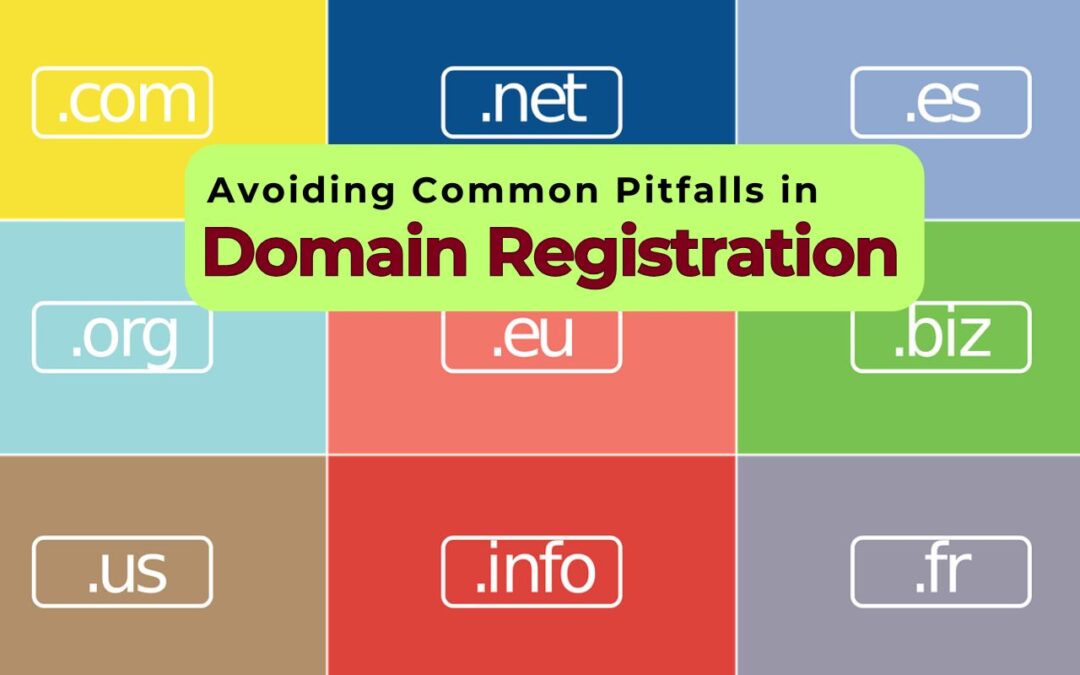Ever wondered why some websites disappear overnight? Big companies invest thousands of dollars to regain control over their domain names.
What appears to be an uncomplicated process of domain registration holds hidden pitfalls that can easily ensnare inexperienced website owners. According to early 2025 statistics over 368 million domain names exist globally but thousands of businesses annually lose their domains because of basic mistakes that could have been prevented.
This guide provides essential navigation through domain registration while steering you clear from common pitfalls that catch website owners unaware.
Inside this guide:
- Domain Registration Fundamentals
- The 7 Deadly Domain Registration Mistakes
- Smart Domain Management Strategies
- Expert Tips for Domain Security
- Domain Management for Business Growth
Domain Registration Fundamentals
Selecting a domain name goes beyond finding an attractive web address. Domain registration acts as the fundamental building block for your digital brand identity and online presence.
When you buy a website domain name, you’re essentially leasing a piece of digital real estate for a specified period. This online address becomes your primary contact point where customers will reach you through email and continue to purchase from you for an extended period.
The domain name system (DNS) functions as an internet directory that converts domain names into IP addresses which computers utilize to find websites. Failure to manage this critical connection between DNS and domain names can cause website downtime or result in losing possession of your domain.
The 7 Deadly Domain Registration Mistakes
1. Registering Under Someone Else’s Name
The greatest error people make is letting web designers or IT staff handle their domain registration. This method offers convenience but poses significant risks when your business relationship with that person terminates.
A small business owner I recently worked with found their domain registered under their previous web developer’s name. After their professional relationship ended they encountered immense legal difficulties when trying to regain control of their domain.
Domain registration should always happen in your own name or under your business entity.
2. Forgetting Renewal Dates
Domain registrations expire. Although it seems straightforward, a large number of businesses fail to renew their domains and subsequently lose them.
The DNIB Quarterly Report indicates that about 25% of domains do not get renewed.
Establish auto-renewal and calendar alerts to occur 30 days before expiration dates.
3. Using a Generic Email for Registration
It is risky to use public email services such as Gmail or Hotmail when registering your domain contact information. Losing control over your email account could result in losing domain management capabilities.
Choose an email address within your domain or establish a specific email account solely for domain management purposes.
4. Ignoring WHOIS Privacy Protection
During domain registration your personal information is visible to the public in the WHOIS database unless you activate privacy protection. Making your personal information public through WHOIS registration can result in spam attacks, identity theft, or direct harassment.
Personal websites require WHOIS privacy protection to be enabled at all times.
5. Choosing the Wrong TLD (Top-Level Domain)
The top-level domain extension that appears at your domain’s end (.com, .net, .org and others) matters more than many realize. Despite the rise of new gTLDs, the traditional .com extension maintains the highest level of recognition and trust.
The .com domain continues to hold top position for business websites but country-specific ccTLDs such as .sg can help companies target local markets.
6. Neglecting Domain Security
Domain hijacking is a real threat. Attackers can seize control of your domain without proper security measures using social engineering techniques or by exploiting registrar system vulnerabilities.
Always protect your registrar account by enabling two-factor authentication and selecting strong passwords that are different for each account.
7. Putting All Your Eggs in One Basket
While registering multiple domains with the same registrar may appear easy it establishes a single point of failure which could put all domains at risk. Your domains become vulnerable when your registrar encounters technical issues or ceases operations because all of your domains are managed by them.
Consider using different registrars for critical domains.
Smart Domain Management Strategies
Build a Domain Portfolio
Don’t just register your exact business name. Consider registering variations of your business name including common misspellings, different domain extensions and related search terms that customers might use.
By the end of Q1 2025 ccTLD domain registrations reached 142.9 million which shows a growth of 2.1 million from the previous quarter according to Business Wire reports. The expansion of domain registrations underlines how crucial it is to maintain a domain strategy which covers multiple domain extensions.
Lock Your Domains
The majority of domain registrars provide a domain locking option to stop unauthorized transfers. A basic configuration setting serves as a barrier against domain hijacking attacks.
Consider Longer Registration Periods
Opt to register your domains for multiple years instead of sticking to annual renewals. Choosing a longer domain registration period lowers renewal oversight risk and offers SEO gains through Google’s interpretation of extended registration as domain legitimacy.
Set Up Domain Monitoring
Various monitoring services can provide notifications about unauthorized modifications to your domain’s DNS settings and WHOIS data. These early warning systems help detect unauthorized domain changes before they cause damage.
Expert Tips for Domain Security
Use a Dedicated Domain Registrar
While add-on domain registration services from hosting companies are available, dedicated domain registrars deliver superior security tools along with more flexible domain management capabilities.
Keep Contact Information Updated
If your contact information is outdated, domain recovery becomes impossible during issues. Ensure your contact details remain current by reviewing and updating them every year.
Document Everything
Maintain thorough documentation of your domain registrations which includes registration dates along with renewal dates and registrar information as well as securely stored login credentials and contact information utilized.
Domain Management for Business Growth
Your domain strategy shouldn’t be static. Regular assessments of your domain portfolio are essential to match your business growth with current requirements and future goals.
Secure domains for your future product lines while protecting your market entry plans by registering domains that competitors might use.
Time to Take Action
Domain registration and management may appear as simple administrative tasks but they play a vital role in ensuring your online success and security.
The security of your digital foundation stays protected when you implement the outlined strategies and avoid common mistakes.
Checking Your Domain Health
Do you have any doubts about whether your domain security measures are adequate? Ask yourself these questions:
- “The registration of my domain is listed under my personal name or under the name of my business?”
- “Can I access the domain management account directly?”
- “Have I enabled additional security features?”
- “Is auto-renewal activated?”
Answering “no” to any of these questions means you should rethink your domain management strategy.
Wrapping It All Up
Although domain registration and management isn’t necessarily the most thrilling part of running a website it remains a crucial element. As 368 million domains exist worldwide today the internet marketplace continues to grow more competitive.
Protect your online presence and maintain uninterrupted website access for customers by steering clear of common pitfalls which this guide identifies and applying solid management practices.
The initial management of your domains prevents complications and recovery difficulties which can arise from later mismanagement.













